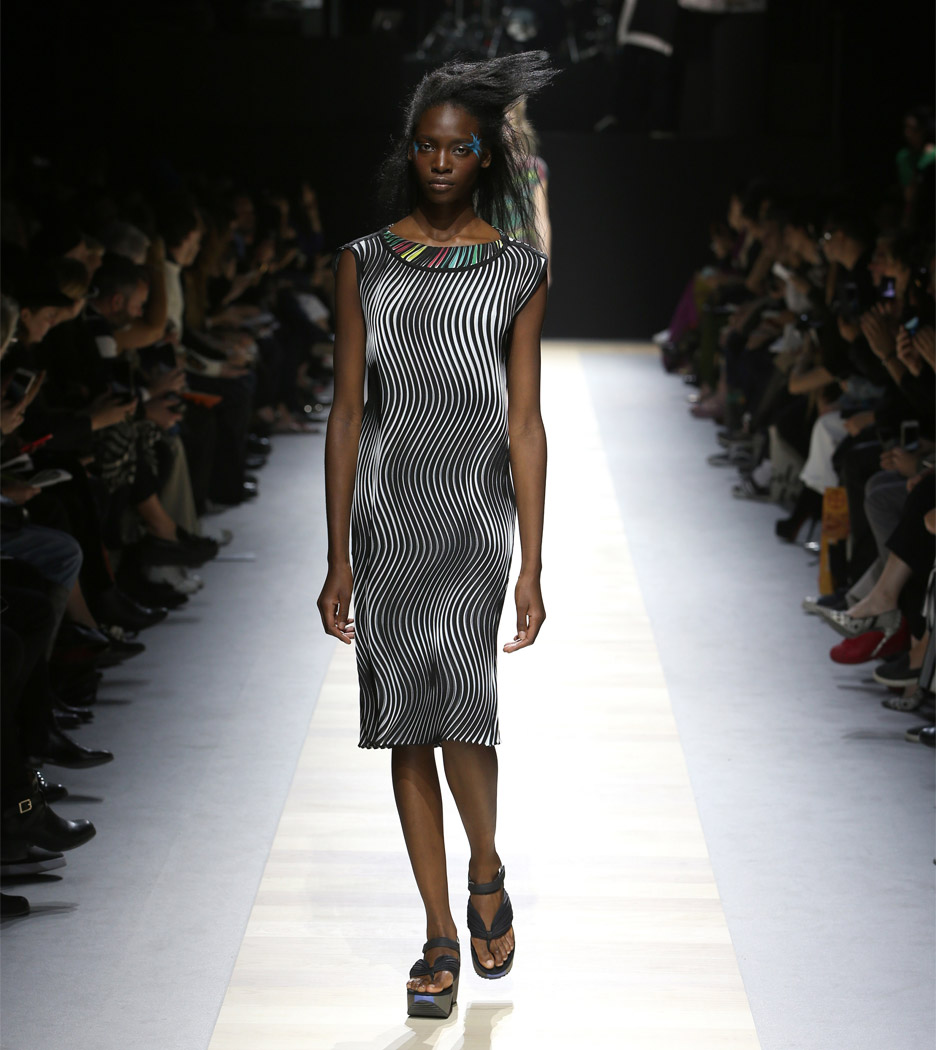Issey Miyake bakes fabric to pleat Spring Summer 2016 garments
Japanese fashion house Issey Miyake has created undulations across clothing in its Spring Summer 2016 collection by baking it in an oven (+ movie).

Issey Miyake developed the new technique to create texture across the garments in its recently released womenswear collection.

The tops and dresses are cut from a fabric with special properties that react to heat.

During the production process, wavy lines of glue are stamped onto the garments in horizontal or vertical stripes. Multicoloured dyes are then applied onto the gaps in between.

The clothes are then put in an oven and baked. This causes the areas of fabric without glue to expand outward, creating protruding bands around the garments.

After washing, another dye is added to colour the remaining white sections of material.

The final result is clothing that bounces when the wearer moves, revealing the rainbow-hued stripes hidden beneath the wavy bands.
The brand is well-known for its pleated garments, and even has a dedicated line known as Pleats Please Issey Miyake.

In 2014, womenswear creative director Yoshiyuki Miyamae told Dezeen that the brand's focus was "being innovative with technology".

He also explained another pleating technique developed by his team, which involves fabric that contracts into rigid structures when exposed to steam.

Issey Miyake was set up by its namesake founder and fashion designer in the 1970s. Other examples of the brand's innovative fabric-folding techniques include a range of clothes that expand from two-dimensional geometric shapes into structured shirts, skirts, pants and dresses.

A showcase of Miyake's work spanning his 45-year career is set to open in Tokyo this March, and is one of Dezeen's top 10 architecture and design exhibitions for 2016.

Issey Miyake also recently launched the Twelve watch, which was designed by Naoto Fukasawa to resemble the shape of a socket wrench. The timepiece is now available from Dezeen Watch Store »
Photography is by Frédérique Dumoulin.